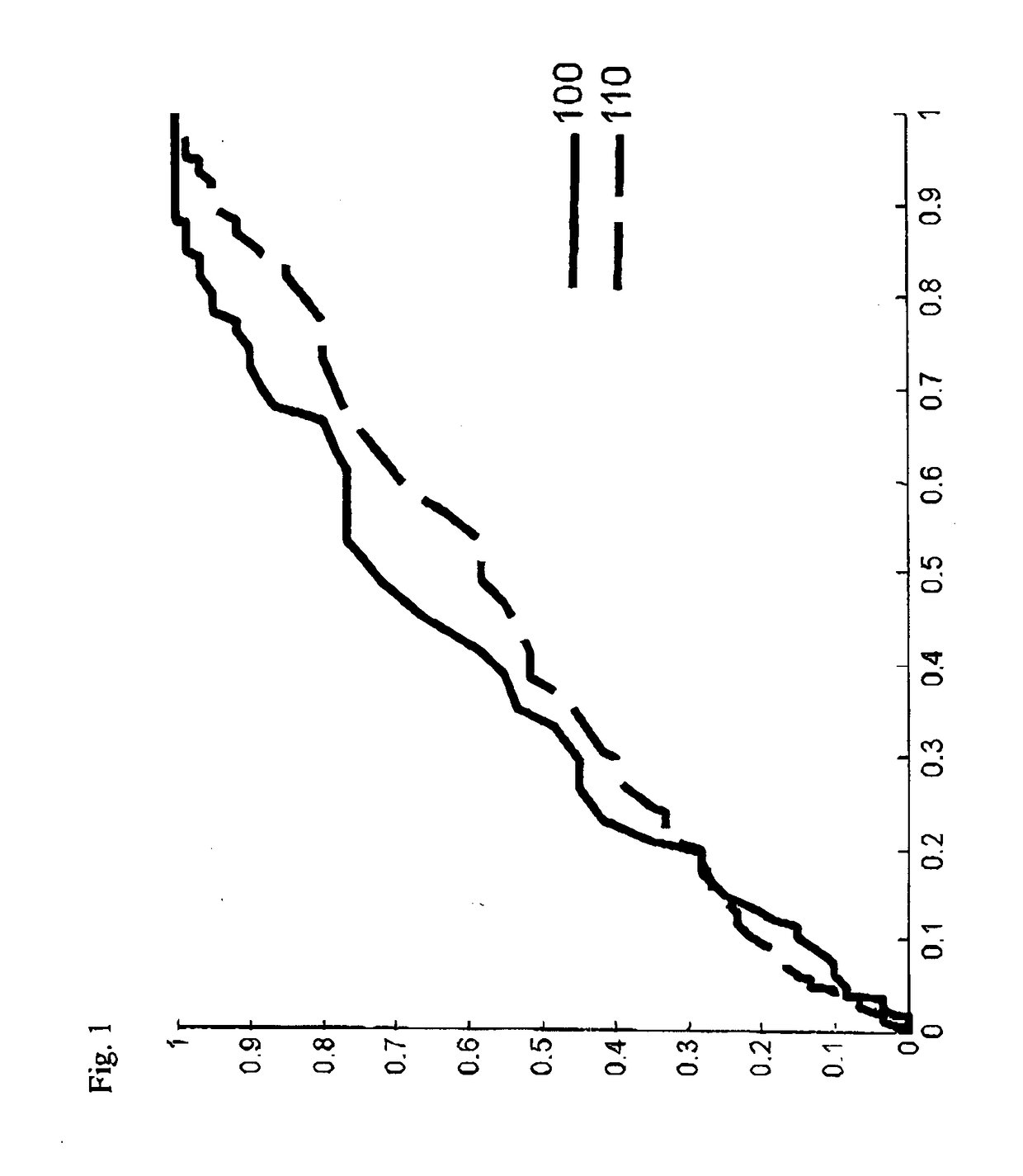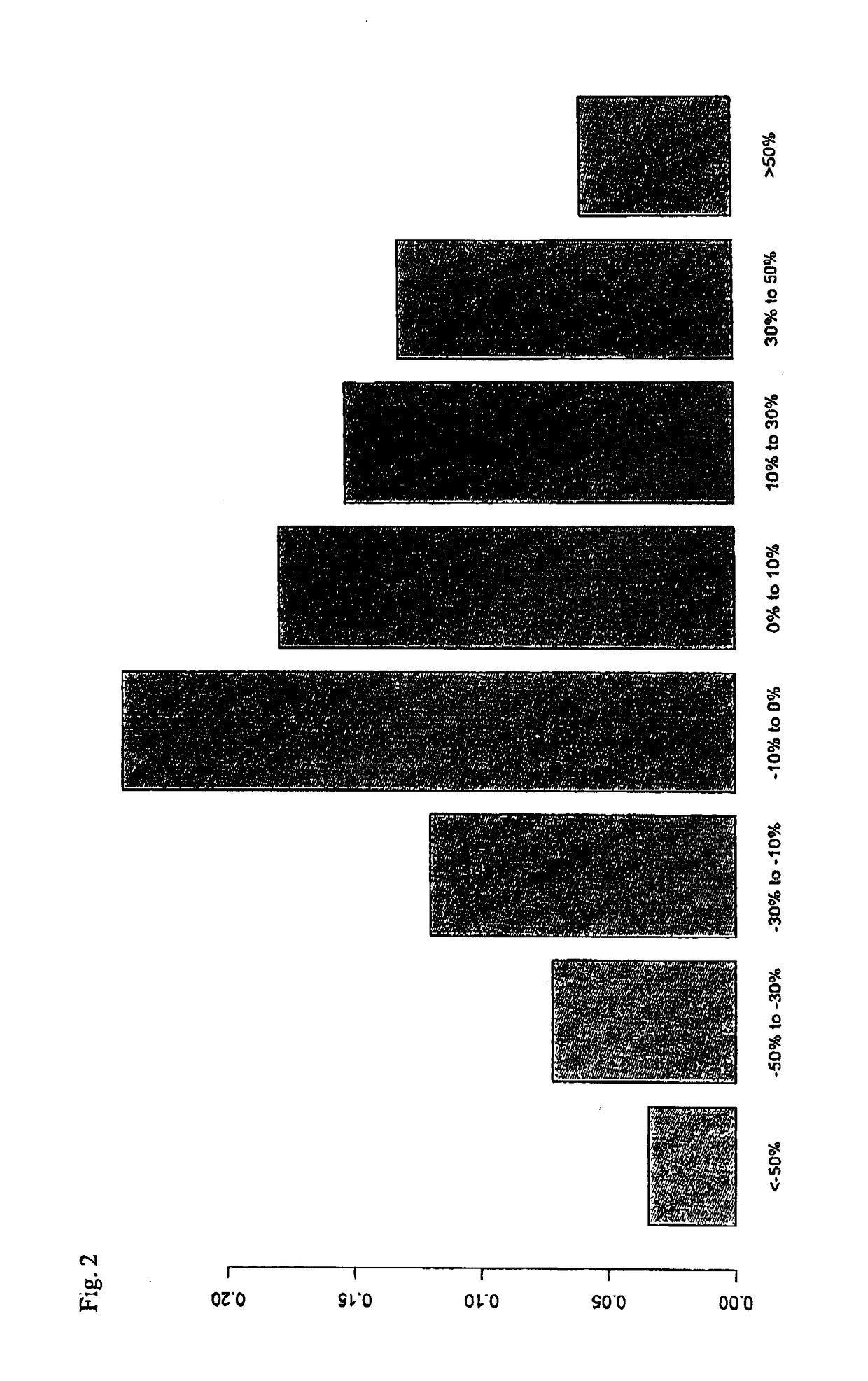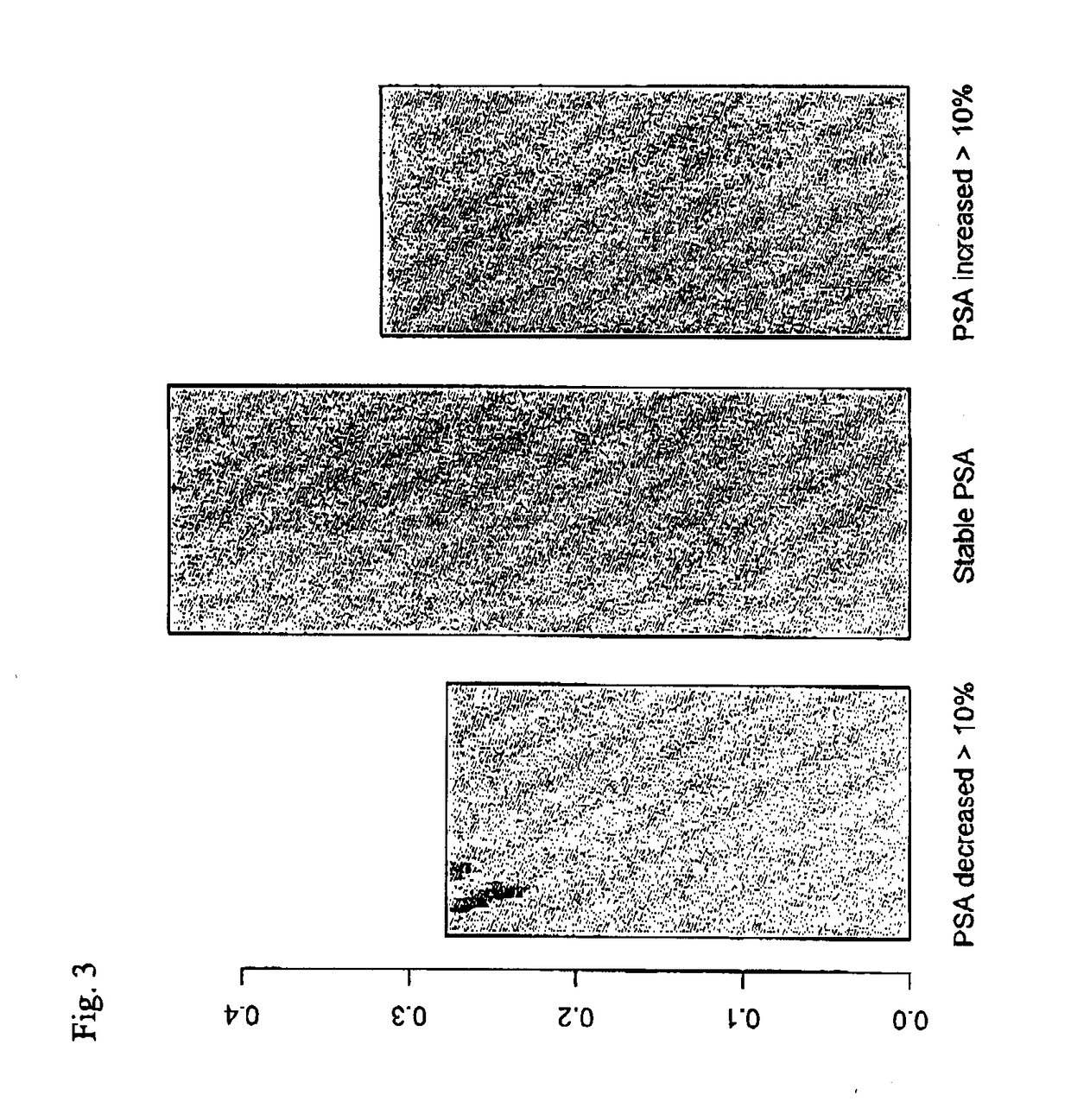Method for detecting a solid tumor cancer
a solid tumor and detection method technology, applied in the field of detection and identification of various forms of proteins, can solve the problems of limiting the use of active surveillance patients in the management of patients, significant risk of misclassification of patients, and difficult so as to improve the ability to detect solid tumor cancer, reduce the risk of having cancer, and be easily treated
- Summary
- Abstract
- Description
- Claims
- Application Information
AI Technical Summary
Benefits of technology
Problems solved by technology
Method used
Image
Examples
example 1
[0168]To illustrate the current invention, a data set comprising 436 individuals who were subjected to prostate cancer screening within the STHLM3 clinical trial was studied. The selected individuals matched the following criteria:[0169]a. The initial PSA test resulted in a value of total PSA below 10 ng / mL.[0170]b. The individual was selected for biopsy.[0171]c. At the time of biopsy, a second blood test was taken and a second PSA test was taken and the corresponding PSA value was determined.[0172]d. The change in PSA value was less than 100%.
[0173]The individuals were admitted to biopsy and second PSA test typically within 10-30 days, but in some cases the time between the initial PSA test and the second PSA test was two or three months. In this cohort, 175 individuals had less than 10% change of the PSA values. 129 individuals had PSA values that decreased between 10% and 73% of the initial PSA value and 101 had PSA values that increased between 10% and 100% of the initial PSA va...
example 2
[0179]In order to illustrate that the invention is of a more general nature, a data set comprising 326 individuals who were subjected to prostate cancer screening within the STHLM3 clinical trial was studied. The selected individuals matched the following criteria:[0180]a. The initial PSA test resulted in a value of total PSA below 10 ng / mL. At the same time, MIC-1 and MSMB values were determined.[0181]b. The individual was selected for biopsy.[0182]c. At the time of biopsy, a second blood test was taken and a second blood test was taken and the corresponding values of PSA, MIC-1 and MSMB were determined.[0183]d. The change in the biomarker value under study was less than 100%.
[0184]The individuals were admitted to biopsy and a second PSA test typically within one month, but in some cases the time between the initial PSA test and the second PSA test was two or three months. Approximately 13% of the individuals in this cohort proved to have aPCa. As shown in Table 1, the three biomar...
example 3
[0185]After collecting patient samples during a longer time, the data set of example 1 had been extended to comprise 1616 individuals who were subjected to prostate cancer screening within the STHLM3 clinical trial. Values for these was studied. The selected individuals matched the following criteria:[0186]a. The initial PSA test resulted in a value of total PSA below 10 ng / mL.[0187]b. The individual was selected for biopsy.[0188]c. At the time of biopsy, a second blood test was taken and a second PSA test was taken and the corresponding PSA value was determined.[0189]d. The change in PSA value was less than 100%
[0190]The individuals were admitted to biopsy and second PSA test typically within 10-30 days, but in some cases the time between the initial PSA test and the second PSA test was two or three months. FIG. 2 shows the risk for aPCa (y-axis), in this case defined as Gleason score=7, 8, 9, or 10, as a function of the extent of change in PSA value. Individuals who had almost the...
PUM
| Property | Measurement | Unit |
|---|---|---|
| time | aaaaa | aaaaa |
| time | aaaaa | aaaaa |
| doubling time | aaaaa | aaaaa |
Abstract
Description
Claims
Application Information
 Login to View More
Login to View More - R&D
- Intellectual Property
- Life Sciences
- Materials
- Tech Scout
- Unparalleled Data Quality
- Higher Quality Content
- 60% Fewer Hallucinations
Browse by: Latest US Patents, China's latest patents, Technical Efficacy Thesaurus, Application Domain, Technology Topic, Popular Technical Reports.
© 2025 PatSnap. All rights reserved.Legal|Privacy policy|Modern Slavery Act Transparency Statement|Sitemap|About US| Contact US: help@patsnap.com



